Infertility in Men and Women: A Growing Health Concern in India

Infertility is emerging as a major public health concern in India, impacting an estimated 27.5 million couples struggling to conceive. Despite notable progress in reproductive health and fertility care, access to infertility treatment in India remains limited, especially within the public healthcare system. According to the UNFPA 2025 State of World Population Report, 13% of individuals report infertility as a barrier to fulfilling their reproductive intentions.
One of the major concerns highlighted by healthcare experts is the high cost of fertility treatments, which significantly restricts access for middle- and lower-income groups. Although private IVF clinics and assisted reproductive technology (ART) centers offer advanced services, affordability remains a substantial obstacle. Other contributing factors such as financial pressure, housing challenges, and job insecurity also hinder many from achieving their desired family size.
Social stigma around infertility, particularly toward women, further deepens the challenge. Societal pressures, emotional distress, and misconceptions about infertility often place an unfair burden on women. However, experts continue to stress that infertility affects both men and women equally, and must be treated as a shared responsibility. Various factors—ranging from lifestyle and environmental issues to hormonal disorders and medical conditions—can influence fertility.
Dr. Sujata Kar, a distinguished Obstetrician and Gynecologist based in Bhubaneswar, underscores the critical need for public education on infertility awareness and reproductive choices. She states, “Infertility is not just a medical issue but a social challenge. Couples should be empowered with the right information and resources so they can make informed decisions about parenthood without fear of judgment.”
Addressing India’s infertility crisis requires strengthening reproductive rights and agency—ensuring individuals can make free, informed choices about their fertility journey. Experts call for expanding affordable fertility services, offering paid family leave, and eliminating social stigma as vital steps toward sustainable change. As emphasized in the UNFPA report, supporting individual reproductive goals matters far more than concerns over population growth or decline.
To move forward, India must focus on increasing access to fertility care, encouraging open dialogue about reproductive health, and creating a society where everyone has the freedom to build the family they dream of, free from shame, pressure, or financial burden.
Early Puberty in Indian Girls: A Growing Concern Every Parent Should Know About
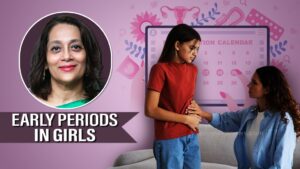
Something is changing—and it’s happening fast. Across India, more and more young girls are entering puberty earlier than ever before. What was once rare is now alarmingly common. Some girls are beginning their first periods or showing signs of puberty as early as age 7. This phenomenon, known as precocious puberty, is raising red flags among doctors, parents, and educators.
Recent studies reveal that nearly 34% of Indian girls show signs of puberty before age 8. The average age for a girl’s first period, or menarche, has dropped to around 12 years—a significant shift compared to previous generations.
“Early puberty is a silent epidemic in urban India. It’s time we move beyond awareness and take concrete action—starting with our homes, our schools, and the choices we make every day for our children,” says Dr. Sujata Kar, a leading gynecologist in Bhubaneswar.
What Causes Early Puberty in Girls?
- Increased Childhood Obesity and Hormonal Changes
One of the main causes of early puberty is weight gain in children. Higher body fat leads to an increase in estrogen—the hormone responsible for triggering puberty. Additionally, excess fat boosts leptin, another hormone associated with early sexual development. - Exposure to Harmful Chemicals in Everyday Products
Children today are regularly exposed to hormone-disrupting chemicals found in plastics, cosmetics, and cleaning products. Compounds like BPA and phthalates can mimic estrogen, interfering with normal hormonal development and accelerating puberty.
Some experts also warn about hormones used in dairy and meat farming, which may be entering the food chain and affecting children’s health. - Screen Time and Disrupted Sleep Patterns
Prolonged screen time and access to inappropriate content can stimulate parts of the brain linked to puberty. Moreover, poor sleep habits are a rising concern. The hormone melatonin, which regulates sleep, also plays a key role in controlling the timing of puberty. Irregular or insufficient sleep can throw this delicate balance off track.
Why Early Puberty in Girls Is a Serious Health Issue
Precocious puberty isn’t just about early physical development—it can have lasting emotional and health consequences. Girls who experience early puberty face a higher risk of:
- Hormonal cancers
- Type 2 diabetes
- Osteoporosis (weak bones)
- Depression and anxiety
While boys are also experiencing earlier signs of puberty, the emotional and social impact is typically more pronounced in girls.
What Can Parents Do to Prevent Early Puberty?
The good news is, there are practical steps every parent can take to help delay early puberty and promote healthy growth in children:
- Offer a nutrient-rich, balanced diet with fresh fruits, vegetables, and whole grains
- Encourage regular physical activity like dance, swimming, or sports
- Limit screen time and ensure digital content is age-appropriate
- Establish a consistent sleep routine to support hormone regulation
- Choose natural, chemical-free products for skincare, food storage, and cleaning
- Help your child maintain a healthy weight
Let’s Protect Our Children’s Physical and Emotional Well-being
Early puberty in girls is a rising concern in urban India, but with the right awareness and lifestyle choices, we can help children grow at a natural and healthy pace. Start with small changes at home, encourage open conversations, and support your child’s emotional development.
Let’s give our children the time, space, and care they need to grow up strong and confident—at their own pace.
Ignoring Period Pain? Think Again – It Could Be Endometriosis
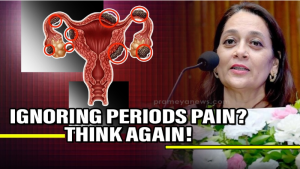
Are you brushing off intense period cramps, bloating, or pelvic fatigue as just “normal”? Think again!
Severe menstrual pain might be a sign of endometriosis, a common yet underdiagnosed condition that impacts millions of women and can lead to infertility.
Imagine facing exhausting cramps, bloating, and chronic pain every month, only to be dismissed or told to “tough it out.” Then, when you’re ready to start a family, you discover that getting pregnant isn’t easy. This is the harsh reality many women with undiagnosed endometriosis face.
What is Endometriosis and Why Is It Ignored?
Endometriosis occurs when tissue similar to the uterine lining grows outside the uterus—affecting the ovaries, fallopian tubes, bladder, and even the intestines. It causes chronic inflammation, internal scarring, and can block fallopian tubes—making conception a real challenge.
Sadly, many women suffer in silence for years because endometriosis symptoms are often dismissed as “just bad period pain.” But this condition can begin even before the first period, manifesting as severe pelvic pain, fatigue, or digestive issues in young girls. Lack of awareness delays diagnosis and leads to long-term consequences—including mental health struggles. Research shows 15% to 20% of women with endometriosis develop depression due to ongoing pain and delayed support.
Fertility and Endometriosis: Can You Still Get Pregnant?
Yes—you can! Endometriosis doesn’t always mean you can’t conceive. But early detection and personalized care are essential.
Renowned gynecologist Dr. Sujata Kar explains,
“Endometriosis is often misunderstood and overlooked, leading to years of unnecessary suffering. Raising awareness and ensuring early diagnosis can make a significant difference in managing symptoms and preserving fertility. No woman should have to endure this pain in silence.”
Treatment Options for Endometriosis and Infertility:
- Hormonal therapy – Balances hormones, manages symptoms, and improves fertility chances
- Pain management – Helps reduce daily discomfort and improve quality of life
- Laparoscopic surgery – Removes abnormal tissue to enhance natural conception
- IVF (In Vitro Fertilization) – Increases chances of pregnancy when other methods fail
- Diet & lifestyle changes – Anti-inflammatory foods, regular exercise, and stress relief can support healing
- Fertility preservation – Options like egg freezing allow for future pregnancy planning
Don’t Suffer in Silence
Endometriosis is not “just painful periods”—it’s a real reproductive health condition that requires medical attention.
If you have chronic pelvic pain, heavy periods, painful intercourse, or unexplained infertility, don’t ignore the signs.
Timely diagnosis and care can help preserve your fertility and improve your quality of life.
With the right endometriosis treatment, many women go on to conceive and become mothers. You are not alone—stay informed, seek support, and don’t lose hope.
World Mental Health Day 2024: Embracing Mental Health at Work

World Mental Health Day, observed annually on October 10th, serves as a crucial reminder of the importance of mental health awareness in our daily lives. Recognized globally, the day fosters open discussions and spreads awareness about mental health issues, reinforcing that mental well-being is just as essential as physical health. The 2024 theme, “Mental Health at Work,” urges individuals and organizations to understand the role of the workplace environment in mental wellness, and the need to foster compassionate and supportive workplace cultures.
This year’s theme, “Mental Health at Work,” emphasizes the need for psychologically safe workspaces. The World Health Organization (WHO) is shining a spotlight on the strong connection between mental health and workplace culture. With most adults spending a large portion of their time at work, it’s critical that organizations create an environment where mental well-being is a priority. In modern workspaces, increasing workplace stress, burnout, and anxiety are becoming common due to rising performance expectations, strict deadlines, and often inadequate support systems.
Dr. Sujata Kar, a renowned gynecologist and advocate for holistic health and emotional well-being, stresses the importance of expanding mental health conversations beyond office walls. “Mental health encompasses emotional, psychological, and social well-being. It affects how we think, feel, and act. Awareness is the first step toward reducing stigma and encouraging people to seek help,” Dr. Kar explains.
She further emphasizes that while organizations are beginning to recognize the value of employee mental health, more needs to be done in terms of actual implementation. “Leaders must take proactive mental health measures to build inclusive workspaces that foster open discussions. It’s not just about having policies in place—creating a culture of empathy and understanding is what truly makes a difference.”
Understanding Women’s Mental Health
Women’s mental health presents unique challenges due to biological, psychological, and social factors. From managing family roles and caregiving duties to handling professional responsibilities, women often face chronic stress that can lead to anxiety and depression.
“Women are often the emotional anchors of their families, which can lead to overwhelming stress. This persistent pressure can result in various mental health conditions,” says Dr. Kar. She highlights that hormonal changes during puberty, pregnancy, fertility treatments, and menopause can significantly affect a woman’s mental health.
“These hormonal fluctuations may cause mood swings, anxiety, and in some cases, lead to serious conditions like postpartum depression or menopausal mood disorders. Understanding these shifts is key to offering comprehensive women’s mental health support that addresses both physical and psychological needs,” she notes.
Dr. Kar recommends that women’s mental health care should involve customized interventions including mental health education, community-based support systems, and resources tailored to empower women.
Tips to Promote Mental Health and Emotional Well-Being
To encourage strong mental health habits, both in professional and personal life, Dr. Kar shares practical and research-backed advice:
- Encourage Open Conversations
Create environments where individuals feel safe to speak about their mental struggles. Normalizing mental health discussions helps reduce stigma and encourages people to ask for help.
- Practice Self-Care
Incorporate self-care into daily life with activities like yoga, mindfulness meditation, or a peaceful walk outdoors. Mindfulness, even for 10 minutes a day, can ease stress and improve focus.
- Support Each Other
Whether at work or at home, being supportive can go a long way. Emotional support—through listening, kindness, or just being present—enhances resilience and emotional connection.
- Prioritize Quality Sleep
Lack of proper sleep heightens emotional instability. A consistent sleep schedule of 7–9 hours with good sleep hygiene practices can enhance mental clarity and mood.
- Manage Caffeine and Sugar
Excess caffeine and sugar can disrupt mood and increase anxiety. Limiting intake of stimulants can help stabilize emotions and reduce stress-related symptoms.
- Improve Time Management
Poor time management leads to accumulated stress. Organize tasks by priority, set realistic goals, and break projects into smaller, manageable steps to ease pressure.
- Seek Professional Help
When feelings become overwhelming, reach out to a mental health professional. Counseling and therapy provide a safe space to develop coping mechanisms and emotional tools.
Final Thoughts
As we mark World Mental Health Day 2024, let’s remember that mental health is not a luxury—it’s a necessity. Whether at work, home, or in our communities, prioritizing mental well-being, breaking the stigma, and creating safe environments should be our collective responsibility. With expert insights from specialists like Dr. Sujata Kar and small lifestyle changes, we can make lasting improvements in our emotional and psychological health.
Busting 10 Common Myths About PCOS – Expert Insights from Dr. Sujata Kar
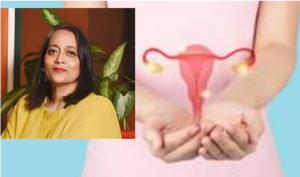
Understanding the Truth About PCOS: Myths vs. Facts
Polycystic Ovarian Syndrome (PCOS) is a widespread hormonal disorder affecting a large number of women, particularly adolescents and young adults. According to studies, nearly 30% of women may be affected by PCOS, making it a significant concern in women’s reproductive health. Common symptoms include irregular menstrual cycles, acne, excessive hair growth, weight gain, skin pigmentation, and hormonal imbalances such as increased insulin levels and elevated androgens (male hormones).
Because these symptoms overlap with those of other health conditions, PCOS is frequently misunderstood and misdiagnosed. This confusion gives rise to many myths that can hinder proper treatment and management.
Dr. Sujata Kar, a reputed gynaecologist and PCOS specialist in Bhubaneswar, states,
“Accurate knowledge of PCOS is crucial. Misconceptions and incorrect diagnoses can lead to inappropriate treatment and unnecessary stress for women.”
Here, we break down some of the most common myths about PCOS and replace them with facts to help women make informed decisions about their health.
Myth 1: PCOS is caused only by genetics.
Fact: While genetics do contribute to PCOS, they are not the only factor. Diet, physical activity, and environmental triggers also play a significant role in the development of this condition.
Myth 2: Irregular periods are the only symptom.
Fact: PCOS symptoms go far beyond irregular menstruation. They may include acne, weight gain, infertility, excessive body or facial hair, and even insulin resistance, which can lead to type 2 diabetes.
Myth 3: Only overweight women have PCOS.
Fact: PCOS can occur in women of all body types. Thin or lean women can also experience the condition and its symptoms.
Myth 4: Women with PCOS cannot get pregnant.
Fact: PCOS may make conception more challenging, but it does not make it impossible. With proper medical guidance, many women with PCOS conceive and have healthy pregnancies.
Myth 5: Birth control pills are the only treatment.
Fact: Combined oral contraceptives (COCs) are one treatment option, but not the only one. Lifestyle changes, such as healthy eating and regular exercise, as well as medications like metformin and fertility treatments, can be effective in managing PCOS.
Myth 6: PCOS has a permanent cure.
Fact: PCOS is a chronic condition without a permanent cure. However, with the right approach, including medications, lifestyle modifications, and regular follow-up, symptoms can be effectively managed.
Myth 7: PCOS affects only young women.
Fact: Although PCOS often starts in the teenage years, it can affect women throughout their reproductive life, including those in their 30s and 40s.
Myth 8: Acne is always linked to PCOS.
Fact: Acne can be a sign of PCOS, but it can also stem from stress, diet, or other hormonal changes. A proper medical evaluation is essential for an accurate diagnosis.
Myth 9: Every woman with irregular periods has PCOS.
Fact: Irregular periods can be due to many reasons such as thyroid dysfunction, high stress, or other hormonal issues. Only a qualified healthcare provider can diagnose PCOS based on clinical symptoms, lab tests, and ultrasound findings.
Myth 10: Weight loss completely cures PCOS.
Fact: Weight loss can significantly reduce symptoms, improve insulin sensitivity, and regulate periods, but it is not a cure. Ongoing treatment and monitoring are usually necessary for long-term management.
Final Thoughts
By debunking these prevalent myths, we hope to promote greater awareness and understanding of PCOS. Early diagnosis, lifestyle changes, and a well-rounded treatment plan are key to managing the condition. If you or someone you know is dealing with PCOS, consult an experienced gynaecologist like Dr. Sujata Kar in Bhubaneswar for accurate guidance and support.
World Menstrual Hygiene Day 2024: Working Towards a #PeriodFriendlyWorld
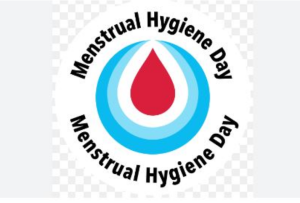
Every woman deserves access to safe, dignified, and healthy menstrual care. Yet for many, menstruation continues to be surrounded by stigma and misinformation—especially among young girls and women in rural areas of India. This lack of awareness and access to proper menstrual hygiene products leads to physical health issues and emotional distress.
World Menstrual Hygiene Day 2024, observed on May 28, is a global campaign dedicated to raising awareness about the importance of good menstrual hygiene and education. It also aims to tackle the real challenges faced by millions of women and girls—particularly in low-income regions with limited access to clean water, sanitation, and safe menstrual products.
A Voice for Change: Dr. Sujata Kar on Menstrual Health
Dr. Sujata Kar, a leading gynecologist in Bhubaneswar, supports this year’s theme: #PeriodFriendlyWorld.
“In a #PeriodFriendlyWorld,” she explains, “stigma and taboos around menstruation become a thing of the past. Every girl and woman should have access to accurate period education, hygienic products, and safe facilities.”
She also sheds light on the health risks associated with poor menstrual hygiene and offers tips to manage menstruation safely.
Health Risks of Poor Menstrual Hygiene
Ignoring proper menstrual hygiene can lead to several infections and complications. Dr. Kar outlines key health risks:
- Urinary Tract Infections (UTIs): Infrequent changing of pads or tampons creates a breeding ground for bacteria, leading to infections in the urethra, bladder, or kidneys.
- Pelvic Inflammatory Disease (PID): When bacteria spread from the vagina to reproductive organs, it can cause PID—resulting in fever, pain, and even infertility.
- Yeast Infections: Wearing non-breathable pads or excessive use of feminine washes can cause yeast overgrowth, leading to irritation and itching.
- Bacterial Vaginosis: Failing to change menstrual products regularly disrupts the vagina’s natural balance, resulting in unusual odor, discharge, and discomfort.
Why Menstrual Hygiene Awareness Matters
Menstrual health is fundamental to women’s well-being, yet it’s often overlooked. Here’s why spreading awareness is essential:
- Empowering Girls: Education around menstruation enables girls to manage their periods confidently, reducing school absenteeism and dropouts.
- Breaking the Silence: Open discussions help dismantle taboos and promote health-seeking behavior.
- Early Education: Teaching girls about menstruation from the age of 8 helps them face puberty with confidence.
- Health Protection: Good hygiene practices help prevent common infections and long-term reproductive complications.
- Infrastructure & Access: Ensuring clean toilets, proper disposal systems, and affordable menstrual products creates a safe environment for all.
Menstrual Hygiene Tips for Every Woman
Dr. Kar recommends simple, effective practices to maintain menstrual health:
- Avoid bubble baths, perfumed soaps, or feminine hygiene sprays.
- Clean your vulva gently with plain water; avoid douching.
- Always wipe from front to back after using the toilet.
- Choose soft, unscented white toilet paper.
- Wear breathable cotton underwear and use 100% cotton sanitary pads.
- Change your pad or tampon every 4 hours—or sooner during heavy flow.
- Choose unscented, hypoallergenic menstrual products.
A Shared Mission: Ending Period Stigma
World Menstrual Hygiene Day 2024 is more than a campaign—it’s a movement toward dignity, equality, and empowerment. By spreading awareness, investing in menstrual health infrastructure, and promoting inclusive education, we can build a society where no girl or woman is held back by her period.
Together, let’s create a #PeriodFriendlyWorld—where menstrual health is prioritized, respected, and normalized.
Understanding Endometriosis: Risks, Impact, Diagnosis, and Symptoms
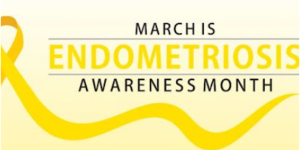
March is recognized as Endometriosis Awareness Month, drawing attention to a complex and often misunderstood condition that affects an estimated 6% to 22% of women in their reproductive years. That translates to nearly 176 million women globally, across all ethnicities and socio-economic backgrounds. Endometriosis is defined by the presence of endometrial-like tissue growing outside the uterus, which can lead to pain, infertility, and a range of other symptoms.
Endometriosis: An Enigma
Dr. Sujata Kar, Obstetrician and Gynecologist, explains that endometriosis is characterized by the growth of endometrial glands and stroma outside the uterine cavity, most commonly in the pelvic region but potentially affecting any organ. This ectopic tissue responds to hormonal cycles, leading to inflammation, adhesions, and in some cases, infertility.
Key Risk Factors for Endometriosis:
| Risk Factor | Description |
| Reproductive Age | Most common in reproductive years |
| Early Menarche | Early onset of menstruation |
| Prolonged & Frequent Cycles | Longer and more frequent menstrual cycles |
| Nullipara | Having never given birth |
| Cryptomenorrhoea | Hidden menstrual bleeding |
| Family History | Relatives with endometriosis |
How Endometriosis Affects Daily Life
Endometriosis significantly impacts women’s physical, emotional, and social well-being, often during their most productive years. It is not a lifestyle-related disease and can affect women from all walks of life. Delayed diagnosis and mismanagement often result in reduced quality of life and work productivity.
Symptoms and Treatment Options
Recognizing the symptoms of endometriosis is crucial for early intervention. Common symptoms include:
| Symptoms | Treatment Options |
| Painful periods | Analgesics, Hormonal therapy |
| Pelvic cramps | GnRH analogues, Progestins |
| Pain during sexual intercourse | Mirena, Surgery |
| Pain with bowel movements | Laparoscopic Surgery |
| Pelvic or low back pain | OCPs (Oral Contraceptive Pills) |
| Persistent pelvic pain | Conservative surgical treatments |
Diagnosis
Endometriosis is typically diagnosed through laparoscopy followed by histological examination. However, the severity of symptoms doesn’t always align with the extent of the disease, which can make diagnosis challenging. Pain—especially during menstruation, intercourse, or bowel movements—is the most common indicator.
Treatment for Endometriosis
Management of endometriosis involves a combination of medical and surgical treatments, including:
- Pain-relieving medications
- Hormonal therapies to suppress menstrual cycles
- Minimally invasive laparoscopic surgery
- Hormonal IUDs and oral contraceptives
- Conservative surgical approaches for chronic or severe cases
The choice of treatment depends on symptom severity, age, and whether fertility preservation is a concern.
Living and Coping with Endometriosis
Living with endometriosis involves more than medical treatment—it requires ongoing support, lifestyle management, and emotional care. Finding a knowledgeable and empathetic healthcare provider is essential. Open communication, understanding treatment side effects, and incorporating stress-reducing habits can help improve quality of life.
Final Thoughts
Endometriosis is a deeply challenging but manageable condition. Raising awareness and promoting early diagnosis are key to reducing its impact. With the right support and treatment plan, many women can lead fulfilling lives despite the diagnosis. Education and advocacy can help break the silence around this often invisible illness—making room for better care and understanding.
Combating the Rising Obesity Epidemic Among Women in India: A Call for Collective Action
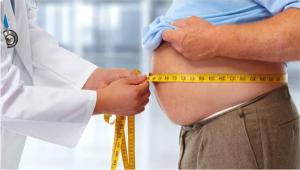
In recent years, India has seen a troubling increase in obesity, especially among women. This growing health concern not only threatens individual wellness but also adds substantial pressure on the nation’s healthcare system. As a gynecologist committed to women’s health, I believe it is critical to highlight this issue and promote actionable solutions.
According to recent statistics, India ranks third globally—behind only the United States and China—in the number of obese individuals. An alarming 70% of the urban population is now categorized as overweight or obese. These figures reflect a serious public health issue that needs urgent attention.
Currently, around eight crore Indians are obese, with one crore falling in the 5–19 age group, pointing to an alarming rise in childhood obesity in India. Additionally, 30 million adults are overweight or obese, and 62 million Indians with diabetes show signs of obesity, such as excess body fat, abdominal obesity, and ectopic fat deposits.
How Obesity Affects Women’s Health
Obesity impacts women’s health across many dimensions, particularly reproductive health and chronic disease risk. Below are the major concerns:
- Fertility Challenges
Obesity can lead to hormonal imbalances that cause irregular menstruation and infertility. It also raises the risk of polycystic ovary syndrome (PCOS), a common condition that further affects fertility.
- Pregnancy-Related Risks
Obese women face a higher risk of complications such as gestational diabetes, high blood pressure during pregnancy (preeclampsia), and an increased likelihood of cesarean sections. These issues can affect both maternal and neonatal health.
- Increased Chronic Disease Burden
Excess weight is a leading contributor to type 2 diabetes, cardiovascular disease, and even some types of cancer. Indian women, especially in urban areas, are increasingly vulnerable to these long-term health conditions.
- Mental and Emotional Impact
Beyond physical health, obesity can lead to low self-esteem, depression, and social isolation, all of which have a significant impact on mental health and quality of life.
The Way Forward: Practical Solutions
Tackling the rise of obesity among women in India calls for collaborative efforts from individuals, healthcare providers, and policymakers. Here are key areas of focus:
Promote Balanced Nutrition
Encourage healthy eating habits with diets rich in fruits, vegetables, whole grains, and lean proteins. Educating women about portion control and nutritional awareness is vital for long-term weight management.
Encourage Regular Physical Activity
Incorporate daily movement into routines—whether it’s walking, yoga, swimming, or dancing. Consistent physical exercise supports weight control and enhances overall women’s wellness.
Prioritize Routine Health Screenings
Regular check-ups should include obesity screening and personalized weight loss counselling, particularly for women of reproductive age. Support systems involving nutritionists, fitness experts, and mental health professionals can make a significant difference.
Conclusion
The growing obesity epidemic among women in India demands urgent action. Beyond personal choices, it requires a unified approach involving awareness, education, and public policy. As medical professionals, we must lead by offering support, accurate information, and proactive care. By empowering women to take charge of their health, we can reduce obesity rates and build a healthier future for the next generation.
Managing Diabetes During Pregnancy: Risks, Solutions, and Expert Advice from Dr. Sujata Kar
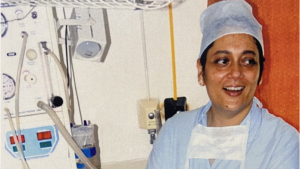
Diabetes during pregnancy, whether pre-existing or gestational, is a growing health concern that requires careful management to ensure the safety of both mother and baby. This metabolic disorder, marked by high blood sugar levels, can lead to serious complications if not properly controlled.
According to the International Diabetes Federation, around 21 million live births globally are impacted by some form of hyperglycemia during pregnancy. Among these, both pre-existing type 1 or type 2 diabetes and gestational diabetes pose significant health risks.
Dr. Sujata Kar, a renowned Obstetrician and Gynaecologist at Kar IVF Clinic, highlights the risks associated with diabetes in pregnancy and shares essential strategies for safe maternal and neonatal outcomes.
Key Risks of Diabetes in Pregnancy
- Higher Risk of Birth Defects
Poorly controlled blood sugar levels in early pregnancy increase the risk of congenital anomalies, especially affecting the heart and spine. Research shows a two to four times higher chance of birth defects in babies born to mothers with pre-existing diabetes. - Gestational Diabetes Complications
Gestational diabetes, a condition where women develop high blood sugar levels during pregnancy, affects approximately 6-9% of pregnancies worldwide (WHO). It can lead to macrosomia (larger babies), preterm labor, and a greater risk of both mother and child developing type 2 diabetes in the future. - Risk of Preeclampsia
Women with diabetes are significantly more prone to preeclampsia, a condition marked by high blood pressure and organ damage. Studies indicate a 2 to 5 times higher risk compared to women without diabetes. - Macrosomia and Labor Complications
Uncontrolled diabetes often results in larger babies, increasing the risk of birth injuries, C-sections, and other delivery complications. - Neonatal Hypoglycemia
Babies born to diabetic mothers may experience low blood sugar levels (hypoglycemia) after birth, which requires immediate monitoring and care to avoid complications. - Long-term Health Concerns
The effects of diabetes extend beyond delivery. Children born to diabetic mothers are more likely to develop obesity and type 2 diabetes later in life, highlighting the importance of continued care after childbirth.
Effective Solutions for a Healthy Pregnancy with Diabetes
- Preconception Care
Planning is key. Women with known diabetes should consult healthcare providers before conceiving to stabilize blood sugar levels and reduce risk factors. - Regular Monitoring and Prenatal Checkups
Frequent blood glucose testing throughout pregnancy allows timely adjustments to diet, insulin, or medication. This supports stable blood sugar control, crucial for avoiding complications. - Nutritional Support
Following a low-sugar, high-nutrient diet is essential. Consultation with a clinical nutritionist can help tailor a diet plan that supports both pregnancy and diabetes management. - Safe Physical Activity
Engaging in moderate exercise during pregnancy improves insulin sensitivity and overall well-being. Activities should be approved by a medical professional to ensure safety for mother and baby. - Medication and Insulin Management
Adhering to prescribed treatment plans is vital. As pregnancy progresses, insulin needs may change, requiring close coordination with a diabetologist or gynecologist. - Home Blood Sugar Monitoring
Using glucometers for daily monitoring helps maintain optimal glucose levels, guiding dietary and medication decisions in real-time.
Expert Insight from Dr. Sujata Kar
“Diabetes during pregnancy is a manageable condition when addressed with early planning and proper care. With personalized guidance and lifestyle modifications, women can enjoy a healthy pregnancy and give birth to healthy babies,” says Dr. Sujata Kar, whose leadership at Kar Clinic & Hospitals continues to provide hope and expert care to women across Odisha.
Conclusion
While pregnancy with diabetes presents unique challenges, the risks can be significantly reduced with preconception planning, medical guidance, and a comprehensive management approach. Maintaining open communication with healthcare professionals ensures early detection and intervention, giving expectant mothers the best chance at a smooth pregnancy journey. For expert consultation and support on gestational diabetes management or pre-pregnancy diabetes care, visit Kar IVF Clinic, Bhubaneswar, today.
Breast Cancer in India: Understanding the Challenge, Symptoms, and Treatment

Breast cancer remains a major public health concern in India, impacting a significant number of women each year. It is currently the most prevalent cancer among Indian women, with its incidence rising steadily over time. This article provides an overview of the current breast cancer landscape in India, including its causes, symptoms, early detection methods, and treatment options.
The prevalence of breast cancer is increasing across the country, making it the leading cancer affecting Indian women. According to the Indian Council of Medical Research (ICMR), more than 180,000 new breast cancer cases were reported in India in 2020 alone. Accounting for 14% of all cancers in Indian women, the growing incidence is driven by a combination of factors such as lifestyle changes, environmental exposure, and genetic predisposition.
According to Dr. Sujata Kar, a renowned Obstetrician and Gynecologist based in Bhubaneswar, here’s what you should know about the causes, symptoms, and treatment of breast cancer:
Causes of Breast Cancer
- Genetic Factors: A family history of breast cancer significantly increases the risk, indicating a genetic link in some cases.
- Hormonal Factors: Early onset of menstruation, delayed menopause, and prolonged use of hormonal contraceptives can heighten the risk.
- Lifestyle Factors: Sedentary lifestyle, excessive alcohol consumption, and obesity contribute to the development of breast cancer.
- Environmental Factors: Exposure to radiation and environmental pollutants also plays a role.
Common Symptoms to Watch For
- Lump or Mass: The most recognizable symptom is a painless lump or mass in the breast.
- Changes in Breast Appearance: Alterations in breast size, shape, skin texture, or the appearance of nipple discharge or inversion should be examined.
- Pain: Although not always linked to cancer, persistent breast pain should not be ignored.
- Lymph Node Enlargement: Swelling in the lymph nodes around the armpit or collarbone may indicate the cancer has spread.
Importance of Early Detection
Early detection greatly improves treatment outcomes. Common methods include:
- Breast Self-Exams: Women aged 20–39 are encouraged to perform monthly self-exams to identify any unusual changes.
- Clinical Breast Examinations: Women between 40–49 years should undergo regular check-ups and ultrasounds every 1–2 years.
- Mammograms: These X-ray screenings can detect tumors that may not be felt. Mammograms are recommended every two years, especially for women at higher risk.
- Biopsy: If abnormalities are found, a biopsy confirms whether the tissue is cancerous.
Treatment Options
Treatment strategies are based on the type and stage of the cancer, along with the patient’s overall health. Common options include:
- Surgery: The tumor is removed surgically, which may involve a lumpectomy or a mastectomy (removal of the entire breast).
- Radiation Therapy: Often used post-surgery to destroy any remaining cancer cells and prevent recurrence.
- Chemotherapy: Cancer-fighting drugs are used to kill or inhibit the growth of cancer cells, either before or after surgery.
- Hormone Therapy: For hormone receptor-positive cancers, this therapy blocks the hormones that fuel cancer growth.
- Targeted Therapy: These drugs specifically target cancer cell mechanisms and are often combined with other treatments.
- Immunotherapy: Boosts the body’s immune system to help it identify and destroy cancer cells.
Conclusion
Breast cancer is a multifaceted disease with a range of risk factors and treatment options. Regular screenings and early diagnosis can significantly improve the likelihood of successful treatment. Being aware of personal risk factors and taking proactive steps—such as routine check-ups and self-exams—can go a long way in maintaining breast health. With continuous advancements in medical science, breast cancer treatment and diagnosis are becoming more effective, offering hope to those affected by the disease.
